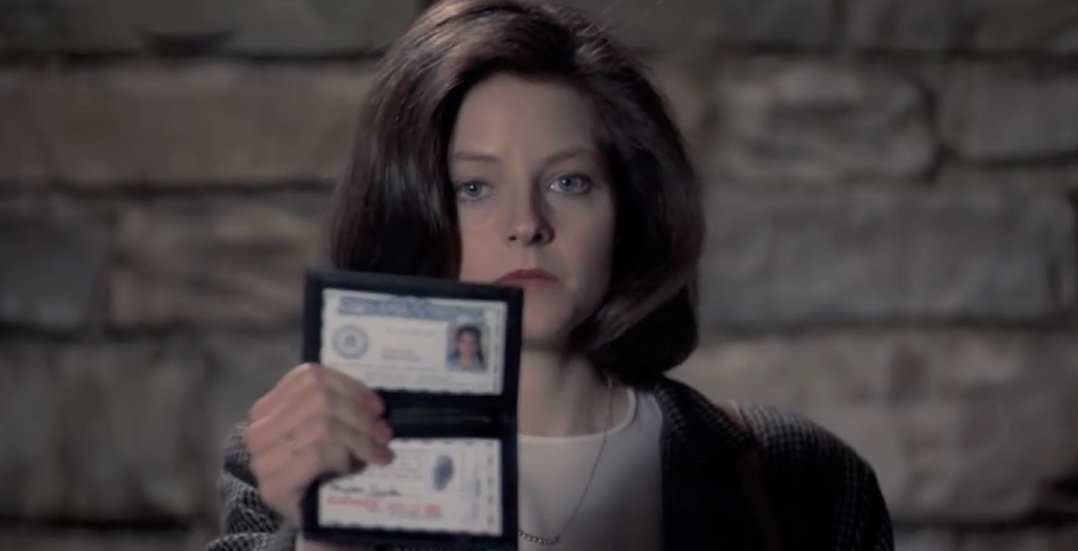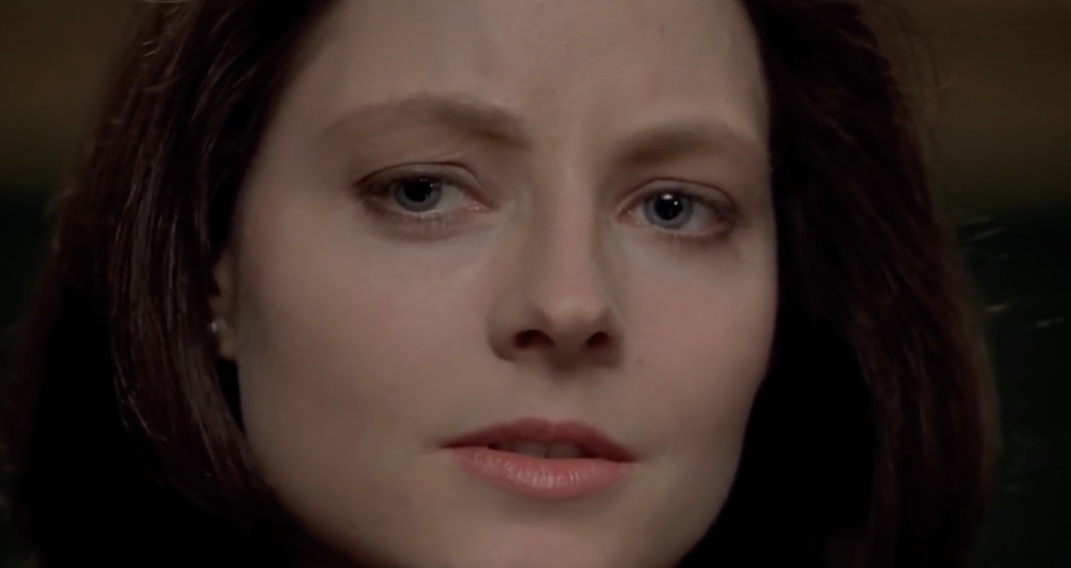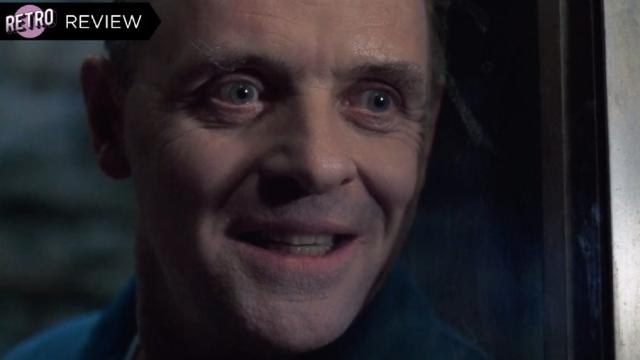Clarice Starling first appeared onscreen in 1991’s The Silence of the Lambs; the 2001 feature Hannibal followed, and the CBS series Clarice debuts this week. The lead’s immediate association has always been with the killers she pursues for the FBI — but rewatching Lambs offers a reminder of a different formidable antagonist.
The Silence of the Lambs, which swept the top five Oscar categories and is the only horror movie to win Best Picture, still holds up as an expertly directed, acted, and edited movie — with a weak spot being the characterisation of Buffalo Bill (Ted Levine), as problematic 30 years ago as it is today. Across the board, though, the big moments are still highly effective. Even when you know it’s coming, Hannibal Lecter’s (Anthony Hopkins) escape plan involving a freshly harvested human-face mask — a stunning demonstration of how he truly is the “monster” everyone’s talked him up to be — is shocking every time.
[referenced id=”1670736″ url=”https://gizmodo.com.au/2021/02/cbs-clarice-teases-agent-starlings-grim-post-silence-of-the-lambs-world/” thumb=”https://gizmodo.com.au/wp-content/uploads/2021/02/09/cpxvtspxzzmlwrycxhmm-300×150.png” title=”Clarice Teases Agent Starling’s Grim Post-Silence of the Lambs World” excerpt=”CBS is ramping up for the debut of Clarice — the new crime-horror series that picks up with The Silence of the Lambs’ FBI prodigy Clarice Starling one year after the events of that film — with all manner of clips and sneak peeks. As expected, there’s no Hannibal Lecter…”]
It’s the little details that just can’t help but stick with you: the “American Girl” introduction of would-be Buffalo Bill victim Catherine Martin (Brooke Smith); the moment where Catherine’s mother, Senator Ruth Martin (Diane Baker), gasps “Take this thing back to Baltimore!” when Lecter, strapped to a gurney in his now-iconic face mask, crudely crosses an etiquette line.
But there’s a subtext that runs throughout the movie that utterly envelops Clarice (Jodie Foster). If you’re looking for it, you can’t miss it. She’s still just an FBI trainee when she’s tasked with querying an imprisoned Lecter as a means to help catch the rampaging Buffalo Bill, but despite her youth and inexperience, we see how intelligent and capable she is. She keeps her composure even in the grossest and most terrifying circumstances (and yet she’s not above having a well-earned parking lot cry about it afterward, if the situation requires it).

But Clarice is a woman. And The Silence of the Lambs, which is about a serial killer who targets women so that he can craft a suit out of their skin, is very careful to establish that Clarice exists in a world where men — all men, not just the ones who happen to be maniacs — unequivocally have the upper hand.
Given the setting (law enforcement, early 1990s), some of that is just due to circumstance. But The Silence of the Lambs finds so many ways to remind the viewer, both subtly and incredibly overtly, that Clarice’s instincts are all the more remarkable because she’s in a realm where the male gaze is frequently weaponised — and is just as frequently beaming directly at her. We see this from the very beginning of the film; in the opening scene, Clarice is summoned to meet with her FBI mentor, Jack Crawford (Scott Glenn), and her journey to his office sees her squeeze into an elevator stuffed with men who loom over her. She casts her gaze upward in a well-perfected display of forced nonchalance, and the implication is clear: Clarice has become used to nudging her way into spaces filled with men, and comporting herself accordingly.
Ignoring casual sexism is just part of her day at this point. There’s another moment at the FBI headquarters, later in the film, when Clarice and her BFF Ardelia (Candyman’s Kasi Lemmons) are jogging and an entire pack of guys turns to ogle them. The women, who are tossing each other study questions as they exercise, don’t even notice. It’s when misogyny compromises her ability to do her job that Clarice minds enough to bristle. Even Crawford, who otherwise seemingly respects her, isn’t immune to the impulse, pointedly excluding Clarice from a private chat with a West Virginia cop about one of Buffalo Bill’s victims.
[referenced id=”1110375″ url=”https://gizmodo.com.au/2018/06/killing-eve-did-the-sexy-serial-killer-trope-right-by-not-focusing-on-the-sexy-serialkiller/” thumb=”https://gizmodo.com.au/wp-content/uploads/2018/06/02/ira1gb79e1s3xvcdiz2z-300×169.jpg” title=”Killing Eve Did The Sexy Serial Killer Trope Right By Not Focusing On The Sexy Serial Killer” excerpt=”A tense scene between Villanelle (Jodie Comer) and Eve (Sandra Oh) in Killing Eve.Photo: BBC America I like to think this is something that doesn’t need to be said, but let’s just throw it out there anyway: Serial killers are not sexy. Or fun. Or funny. They’re monsters. But then…”]
“Starling, when I told that sheriff we shouldn’t talk in front of a woman — that really burned you, didn’t it?” he says later by way of semi-apology. “It was just smoke, Starling. I had to get rid of him.”
“It matters, Mr. Crawford. Cops look at you to see how to act,” she replies, mentally reliving the uncomfortable aftermath of his actions: in a small room full of uniformed cops clad in identical hats, the camera pans around and we can see the men are sizing her up with a mix of curiosity and hostility. And she doesn’t just have to deal with stares and glares. Despite being an FBI trainee working on an extremely sensitive case, she gets hit on in multiple professional settings, whether it’s by Dr. Lecter’s smarmy prison psychiatrist, Dr. Chilton (Anthony Heald), or one of the insect experts she consults about Buffalo Bill’s moth fetish. She gracefully deflects both offers, and you get the sense it’s happened before and will happen again.

The most frustrating part about all of this is that Clarice is so well suited to track Buffalo Bill — and eventually is the one who nabs him in the end — precisely because she’s a woman. She’s around the same age as Bill’s victims, and she comes from a small-town, working-class background just like they do, and spots details that a male agent might miss. During the West Virginia autopsy, she notices the victim’s glitter nail polish and triple ear piercings, deducing that the girl doesn’t look like a local. Later, she explores the bedroom once occupied by Buffalo Bill’s first victim — left untouched since her murder — and instinctively discovers a trove of racy polaroids tucked into the girl’s jewellery box. It’s implied, perhaps, that Clarice once had her own similarly private hiding place.
After seeing the dress pattern that causes her to realise Buffalo Bill’s “woman-suit” motive, her intuition leads her to the home where he starves and skins his victims — while the rest of the FBI follows a red herring hundreds of miles away. The reason Clarice was even in the right town in the first place is because she pulled on one of the threads Lecter dangled before her. With Ardelia, she talks it out, and the two women realise Buffalo Bill actually knew his first victim: “What does this guy do? He covets. How do we first start to covet? We covet what we see every day.”
The male gaze doesn’t always lead to murder, of course. But it does in The Silence of the Lambs — and eventually, a woman who’s so used to being scrutinised by it taps into that experience to catch a killer. We all remember Lecter’s line about the census taker and Buffalo Bill dancing to “Goodbye Horses,” but the most insidious horror in the whole movie just might be the one that doesn’t leap off the screen at first.
It’ll be interesting to see if Clarice, which picks up one year after the events of Silence of the Lambs, continues to explore this theme and dig further into this all-too-relatable aspect of Clarice’s world.
The new series will debuts on February 12 on Stan in Australia.
